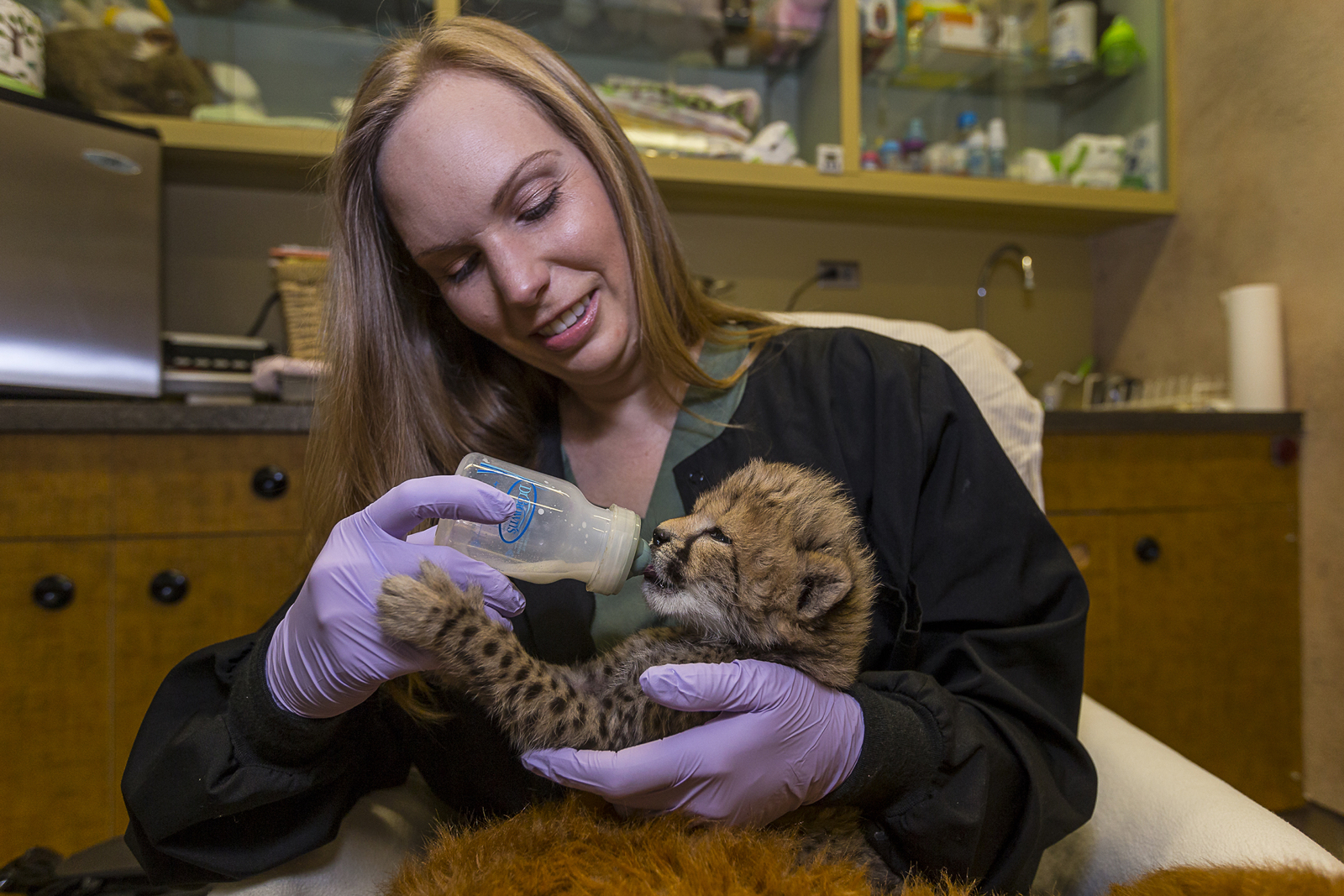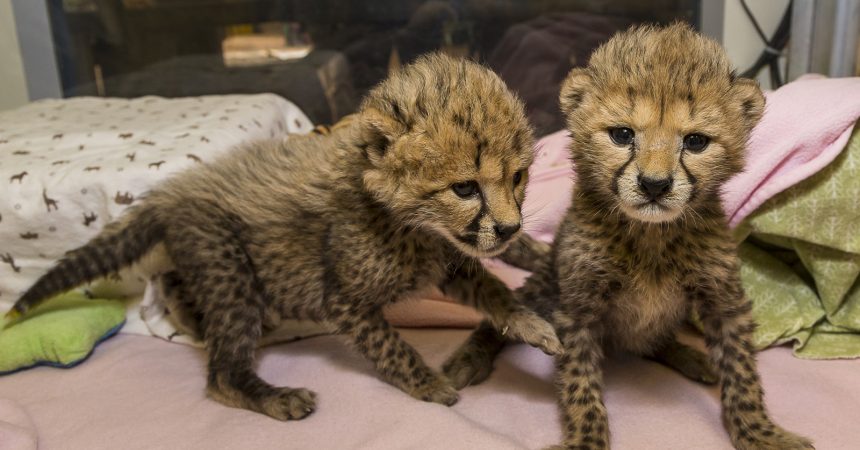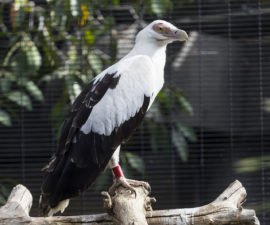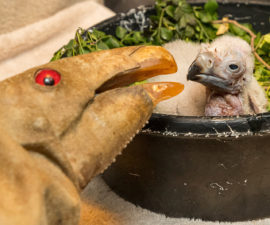This morning, a crowd gathered outside the window of the Animal Care Center nursery at the San Diego Zoo Safari Park in hopes of seeing a pair of female cheetah cubs. The duo was born Nov. 19, 2016 and when their mother didn’t care for them, animal care staff had to intervene. Since then, a team of eight has been caring for them, bottle feeding them a formula specifically designed for cheetahs, weighing them daily to monitor their health, and simulating the grooming that they would normally receive from their mother.
These cheetah sisters don’t have names yet, but staff call them “Yellow” and “Purple” because of the colors of temporary ID markings put on their tails. As the cubs grow, the bottle feedings will become less frequent and at four weeks old, the pair will start to receive solid food. When they reach 70-days-old, they will be weaned from their cheetah formula.
Guests visiting the Safari Park this month can see the cheetahs in their nursery at the Nairobi Station between 9 a.m. and 5 p.m. At this phase in their development, they are sleeping about 22 hours a day but are expected be more active as they mature. The lights in the nursery are usually turned off to mimic the dark den where they would typically spend their first five weeks with their mother.

The San Diego Zoo Safari Park is one of nine breeding facilities participating in the cheetah Breeding Center Coalition (BCC). The goal of the coalition is to create a sustainable cheetah population that will prevent extinction of the world’s fastest land animal. San Diego Zoo Global has been breeding cheetahs for more than 40 years, with more than 150 cubs born. It is estimated that the worldwide population of cheetahs has been reduced from 100,000 in 1900 to just 10,000 left today, with about 10% now living in zoos or wildlife parks.





